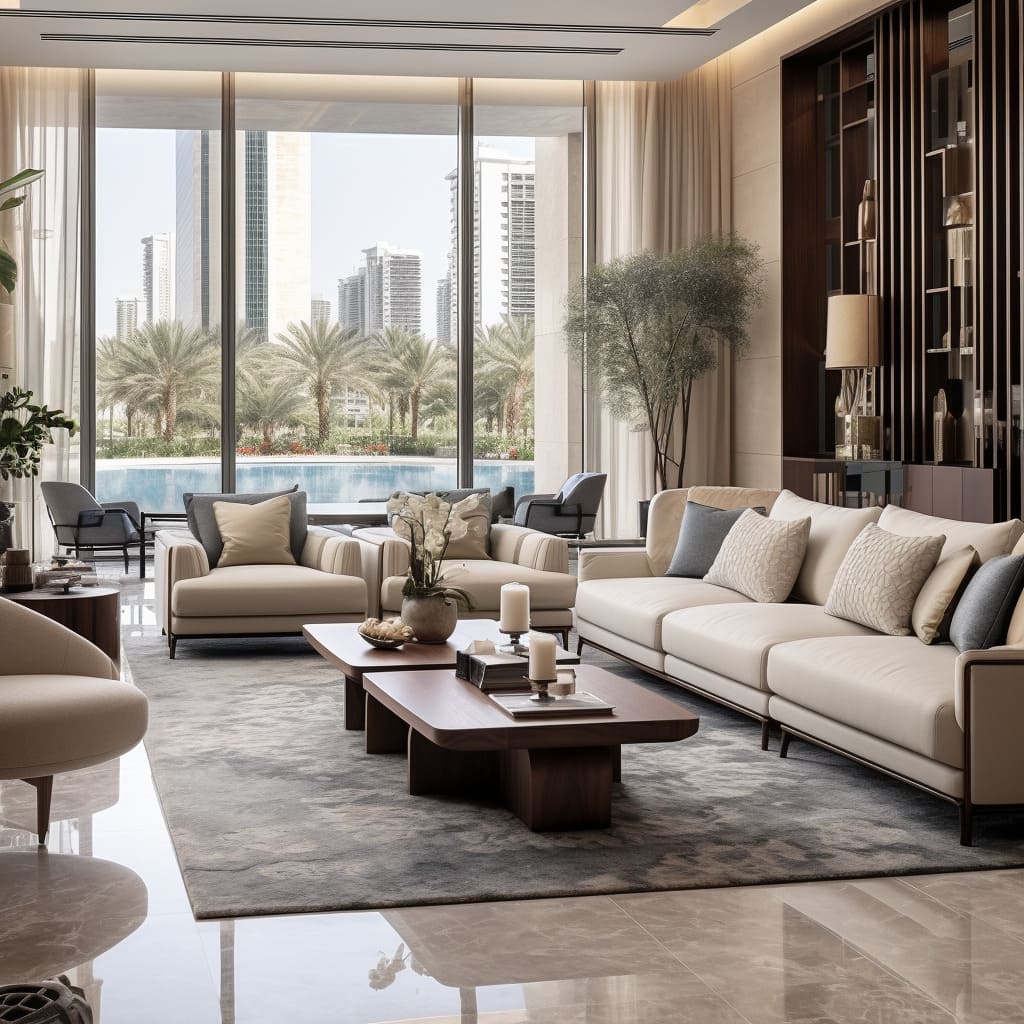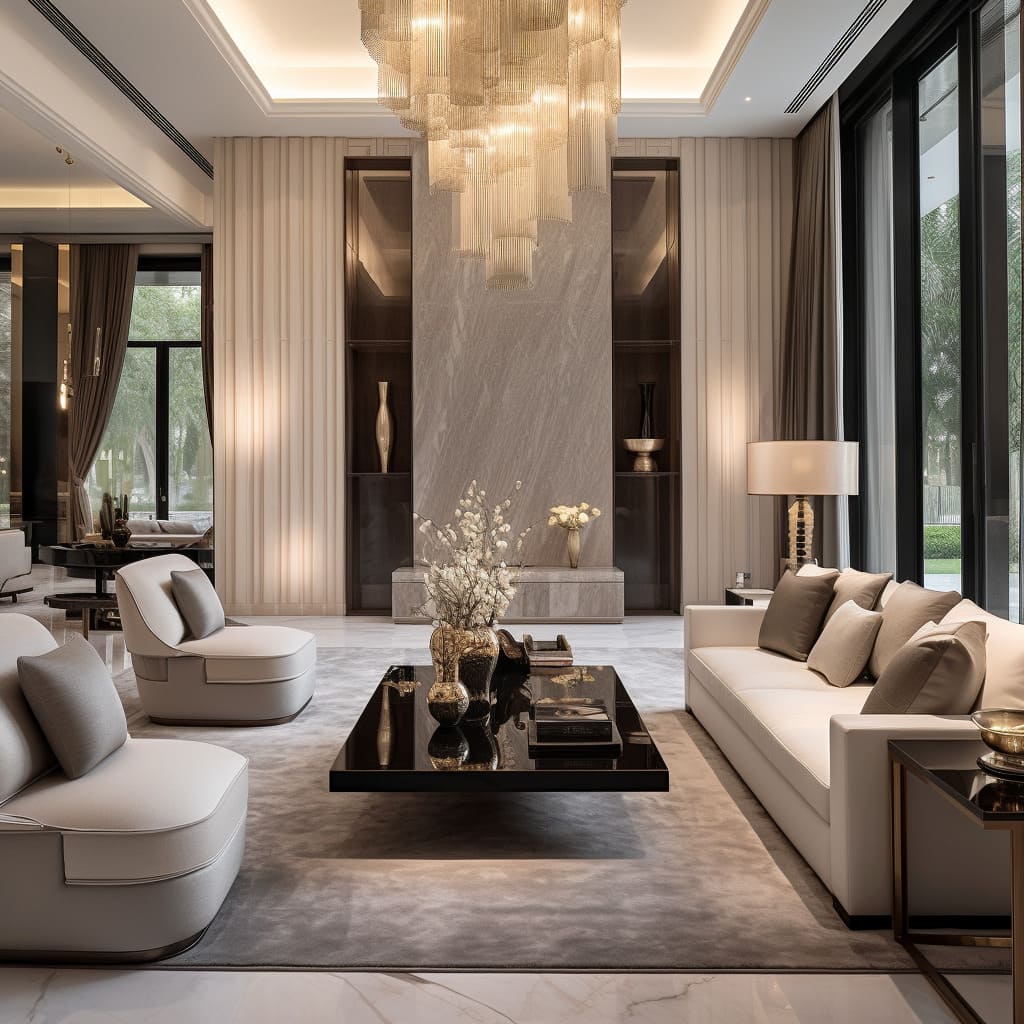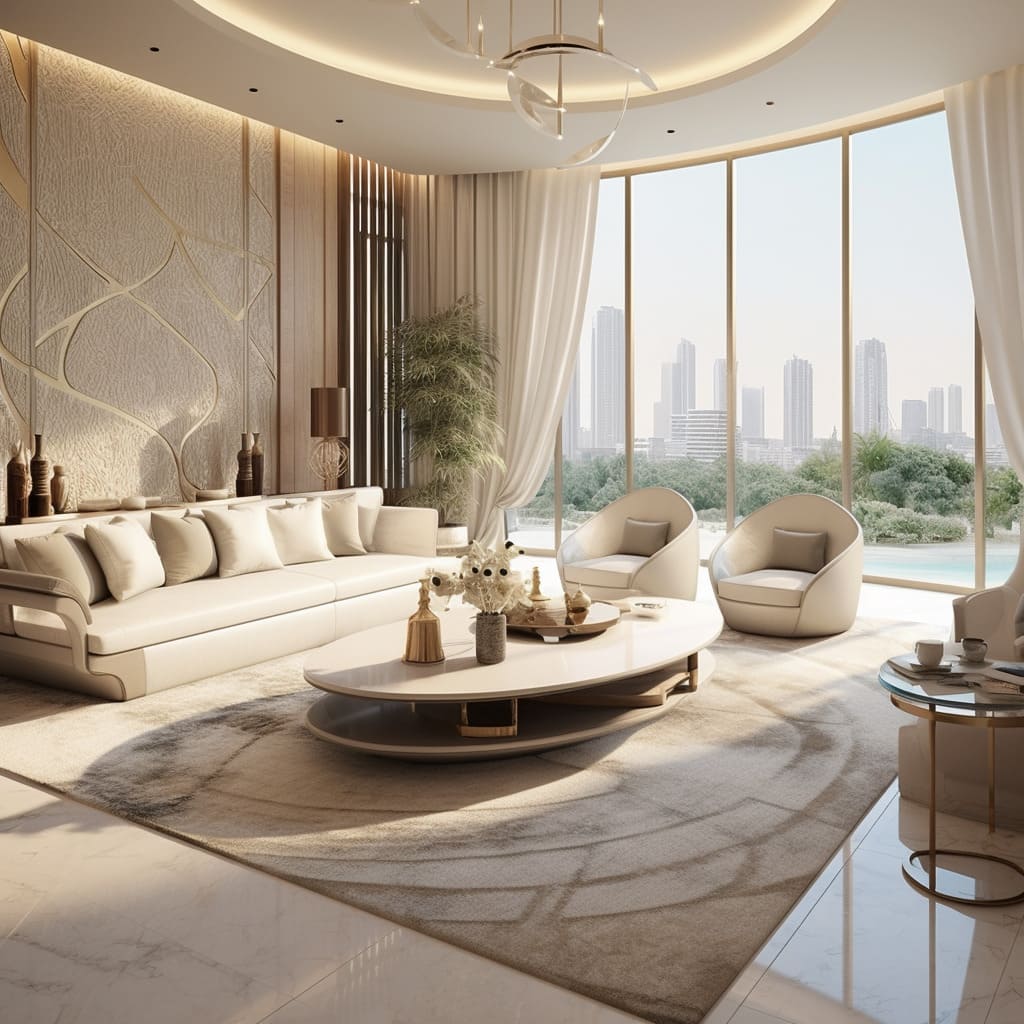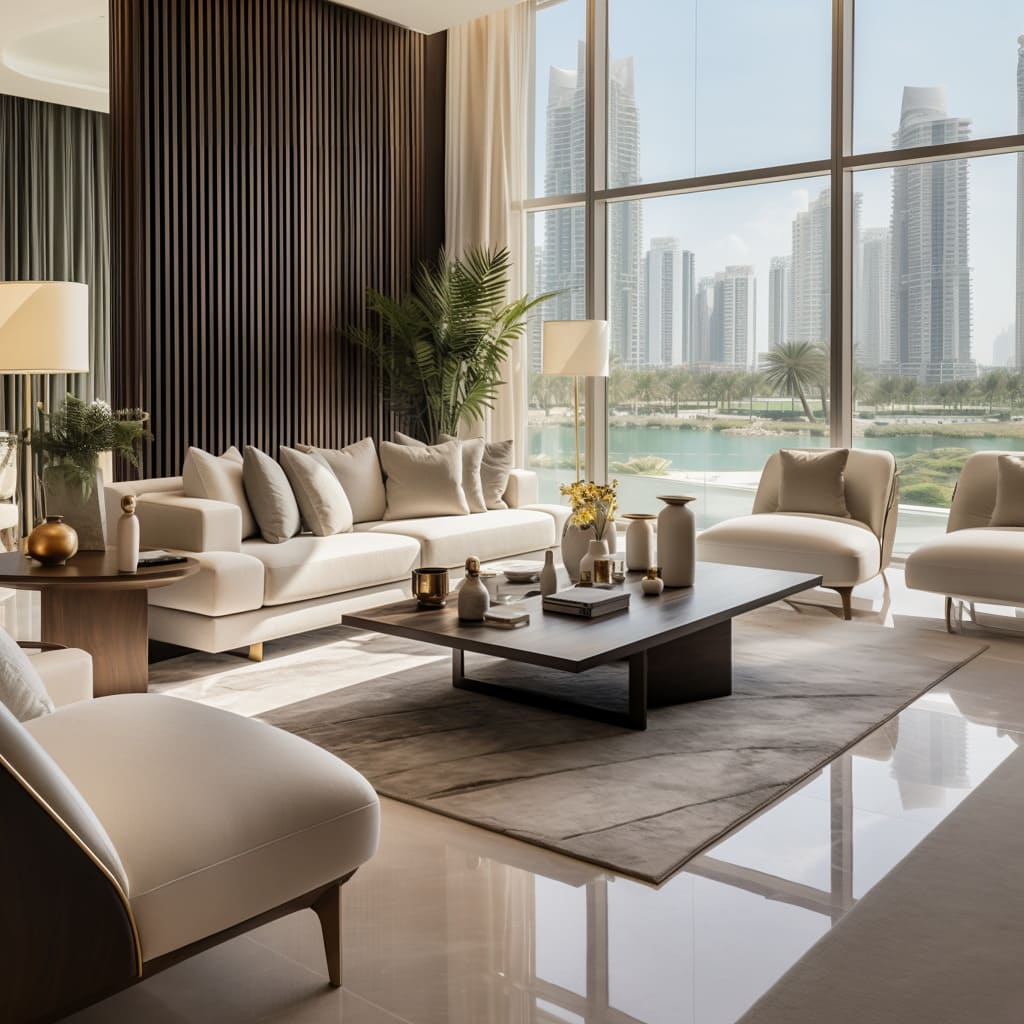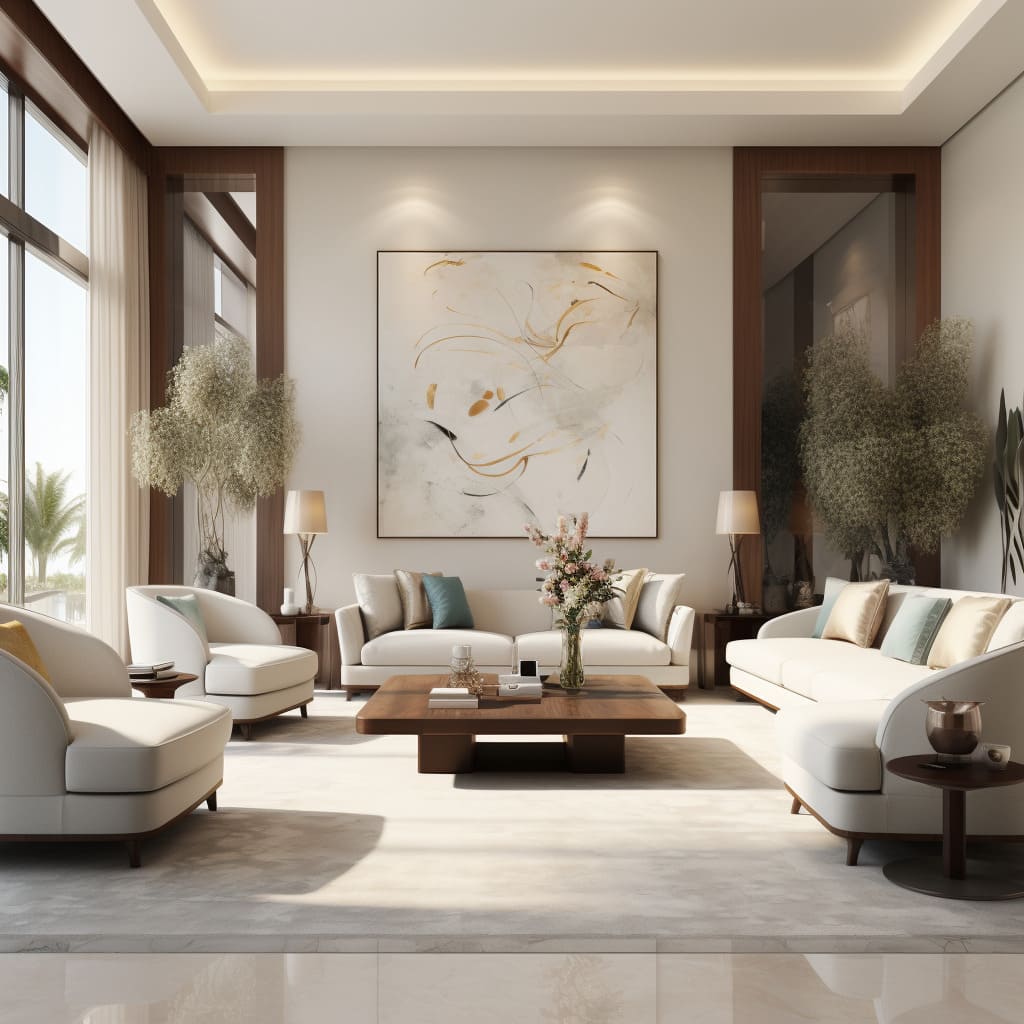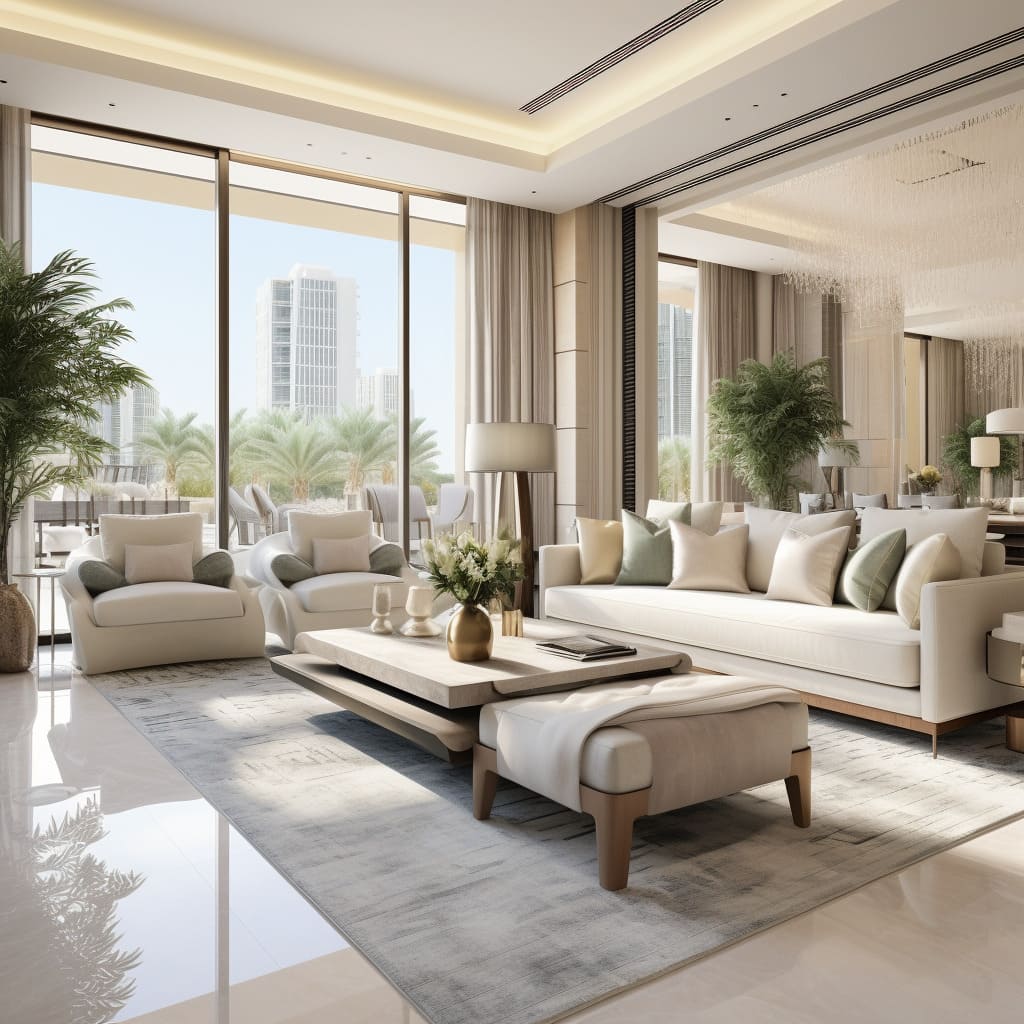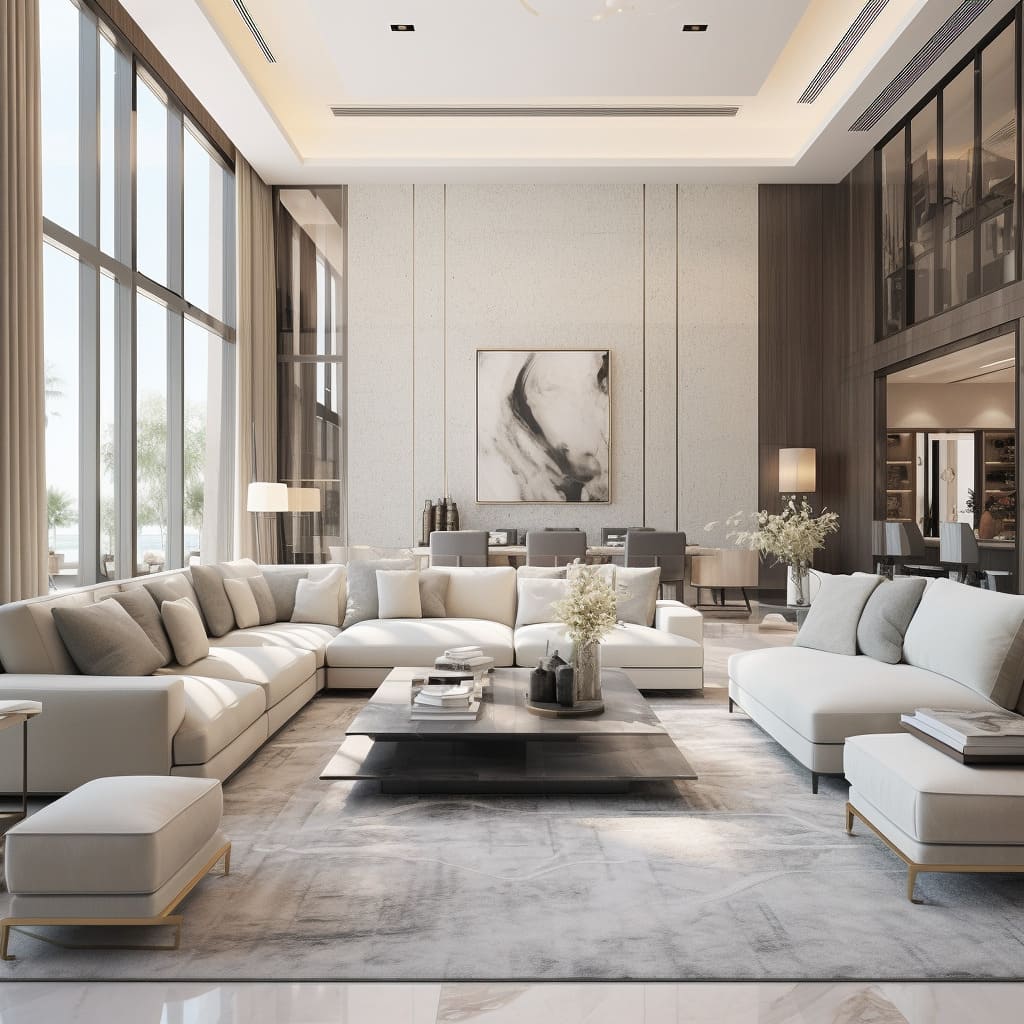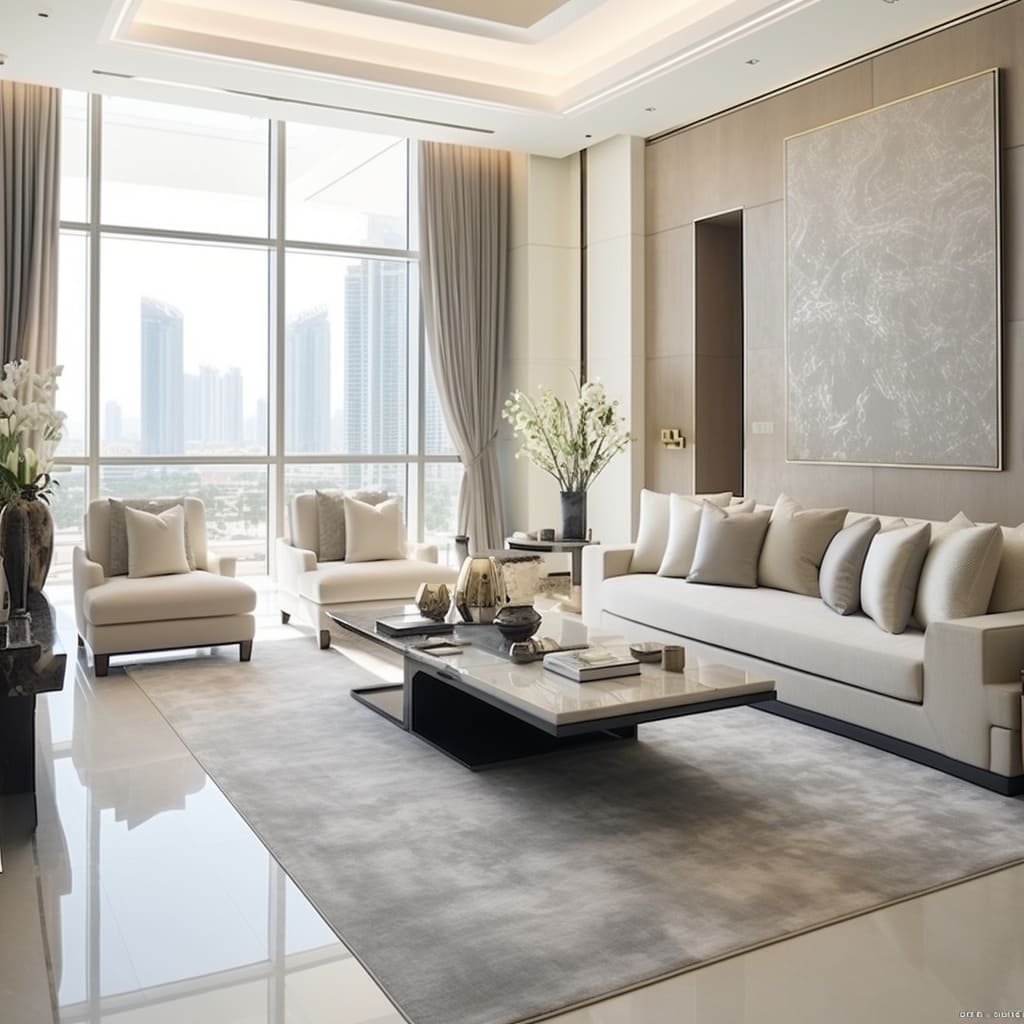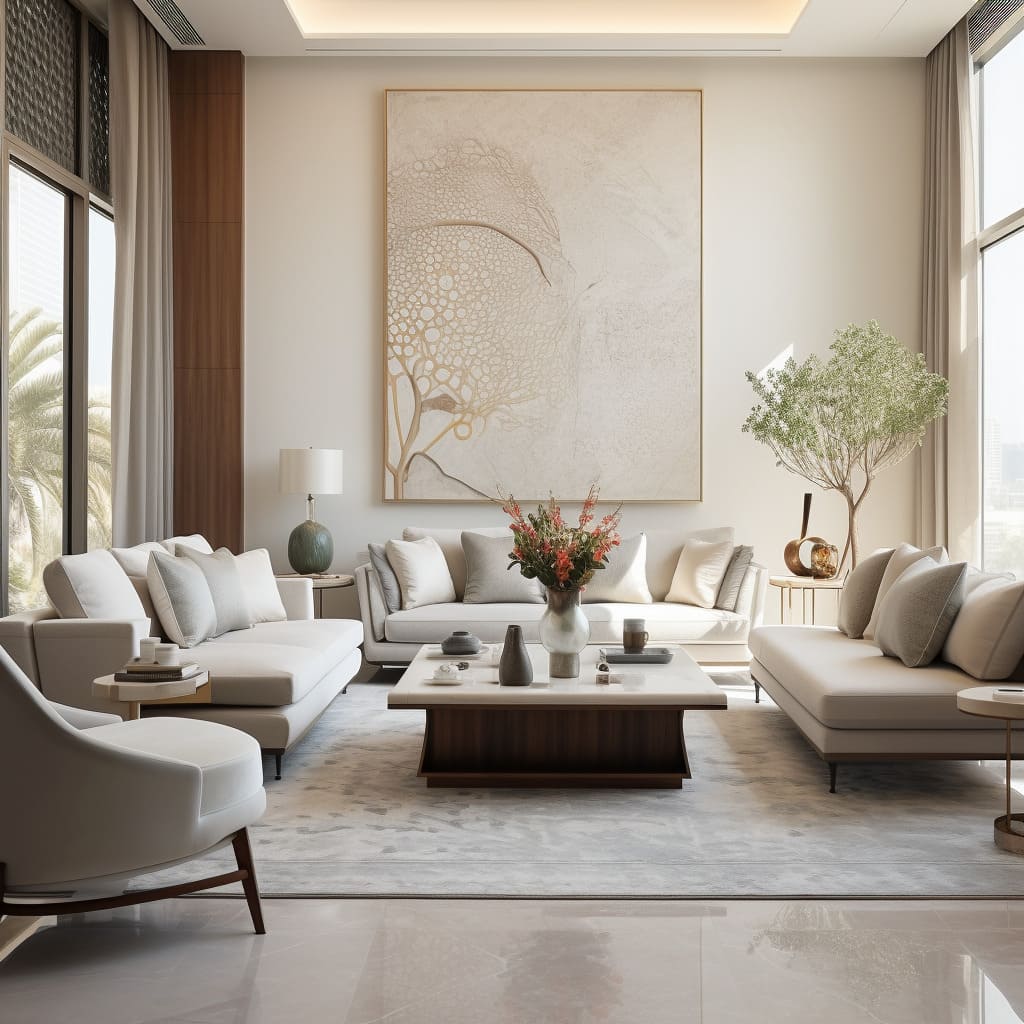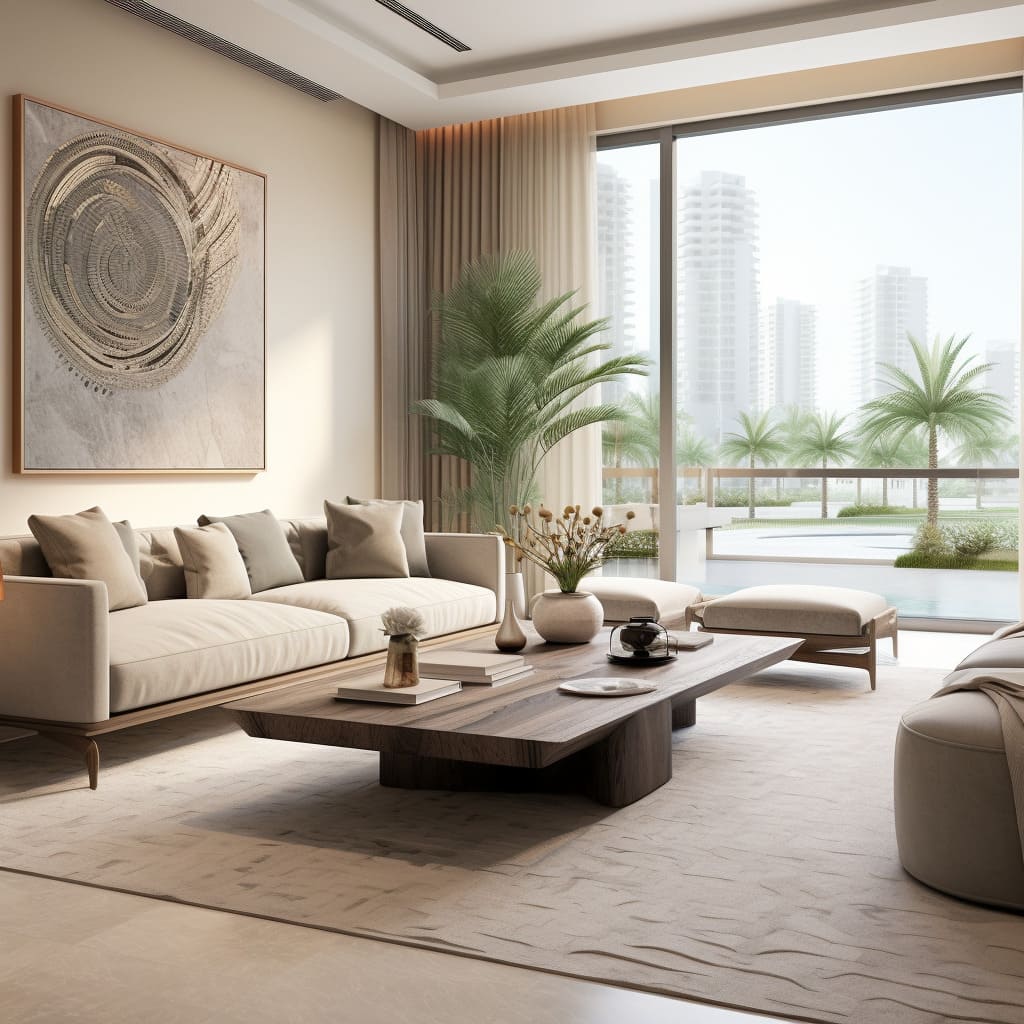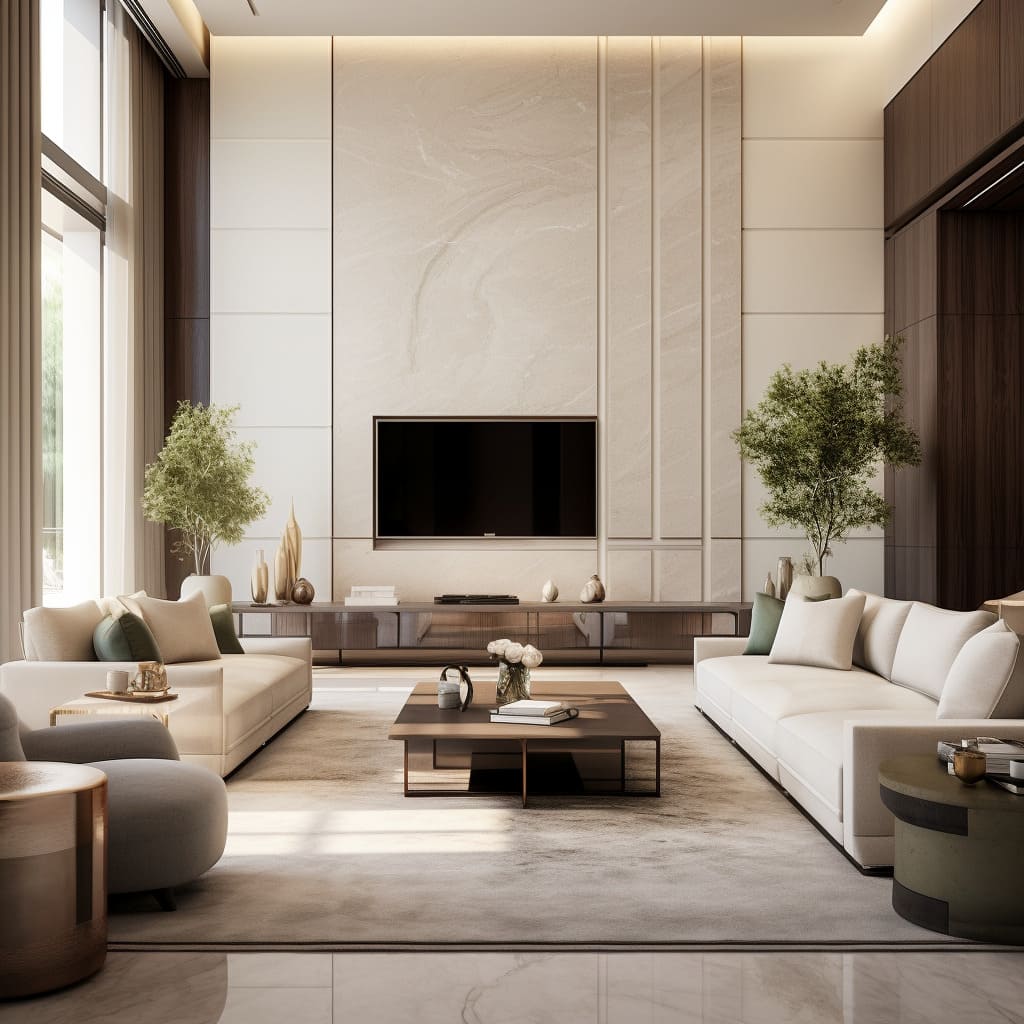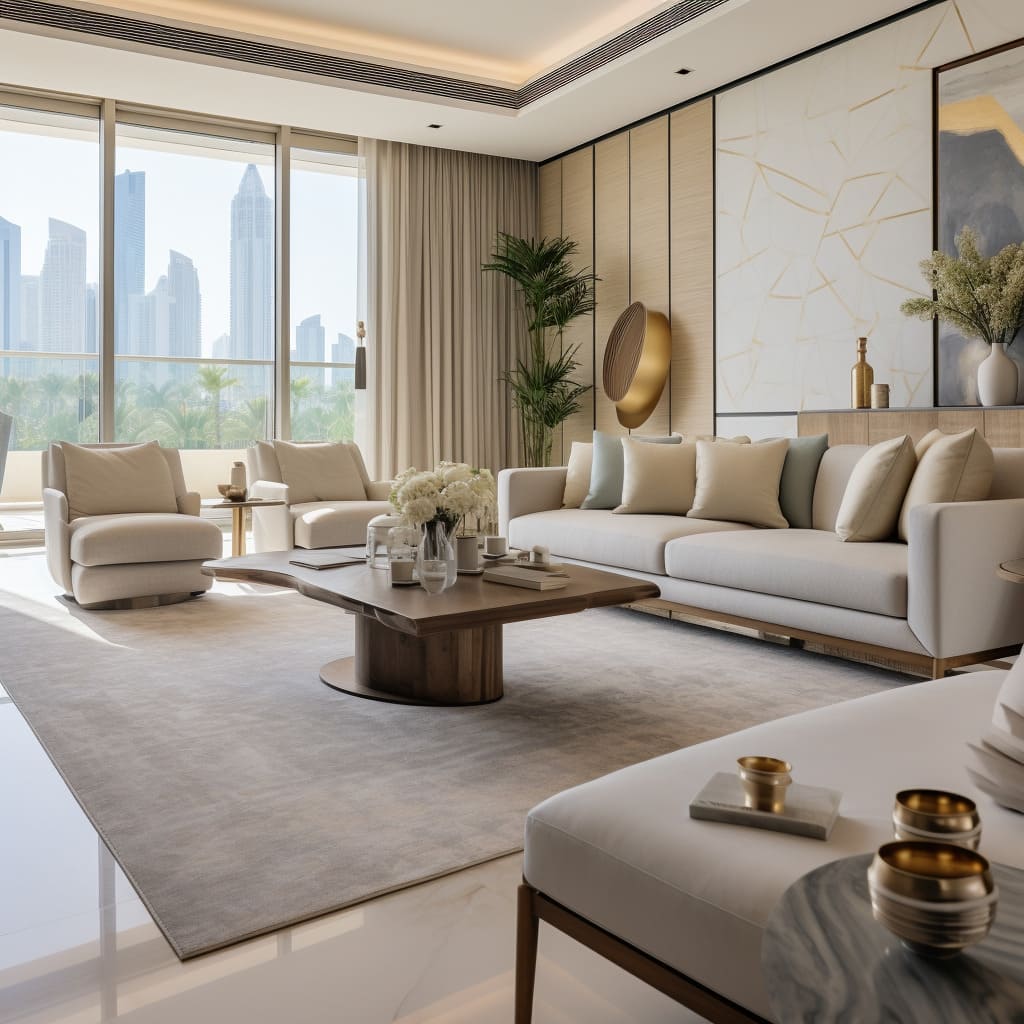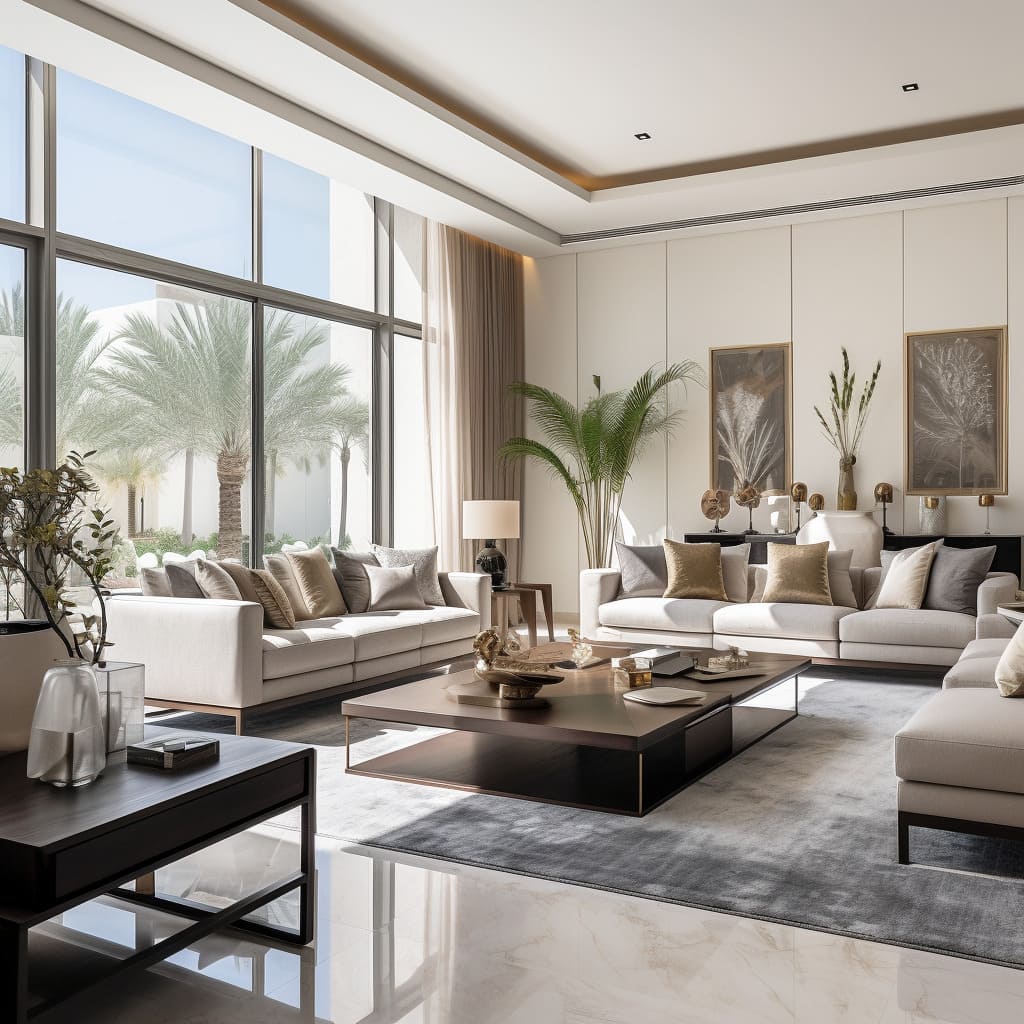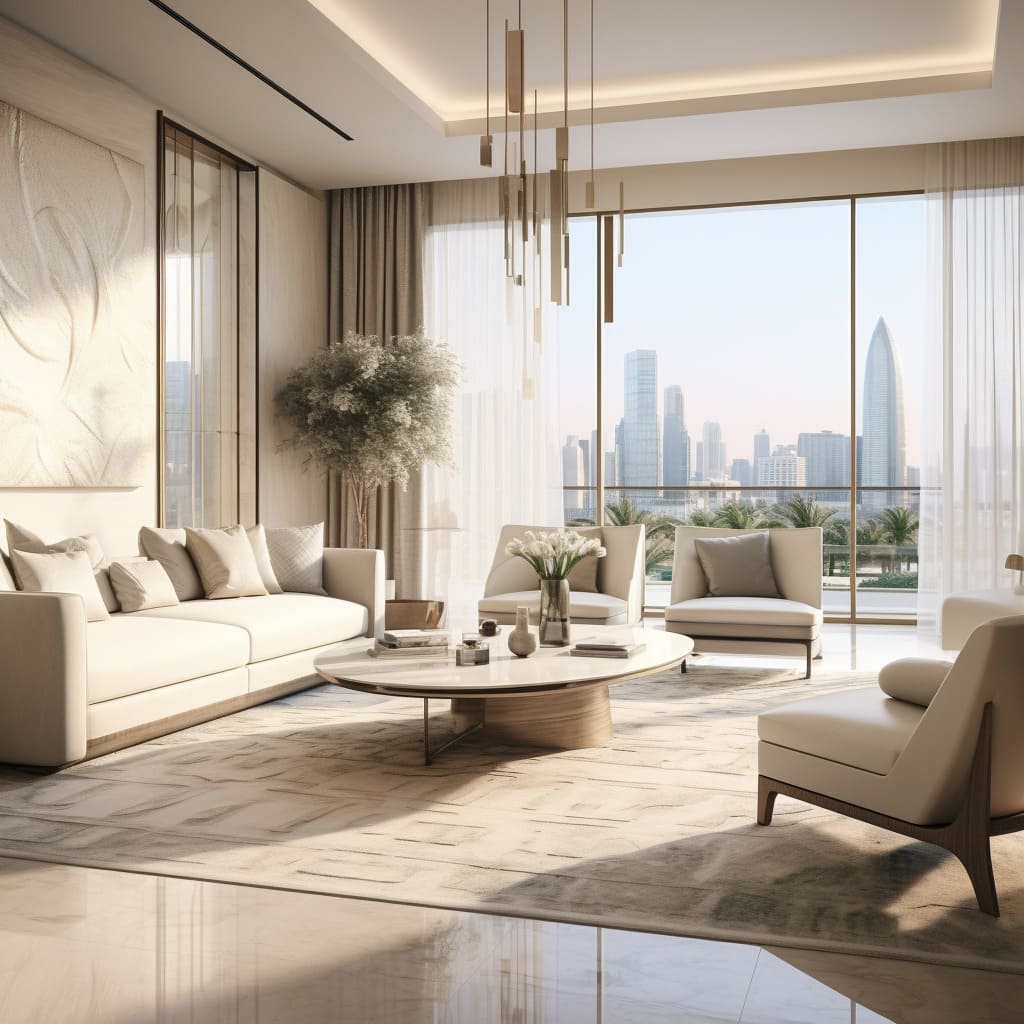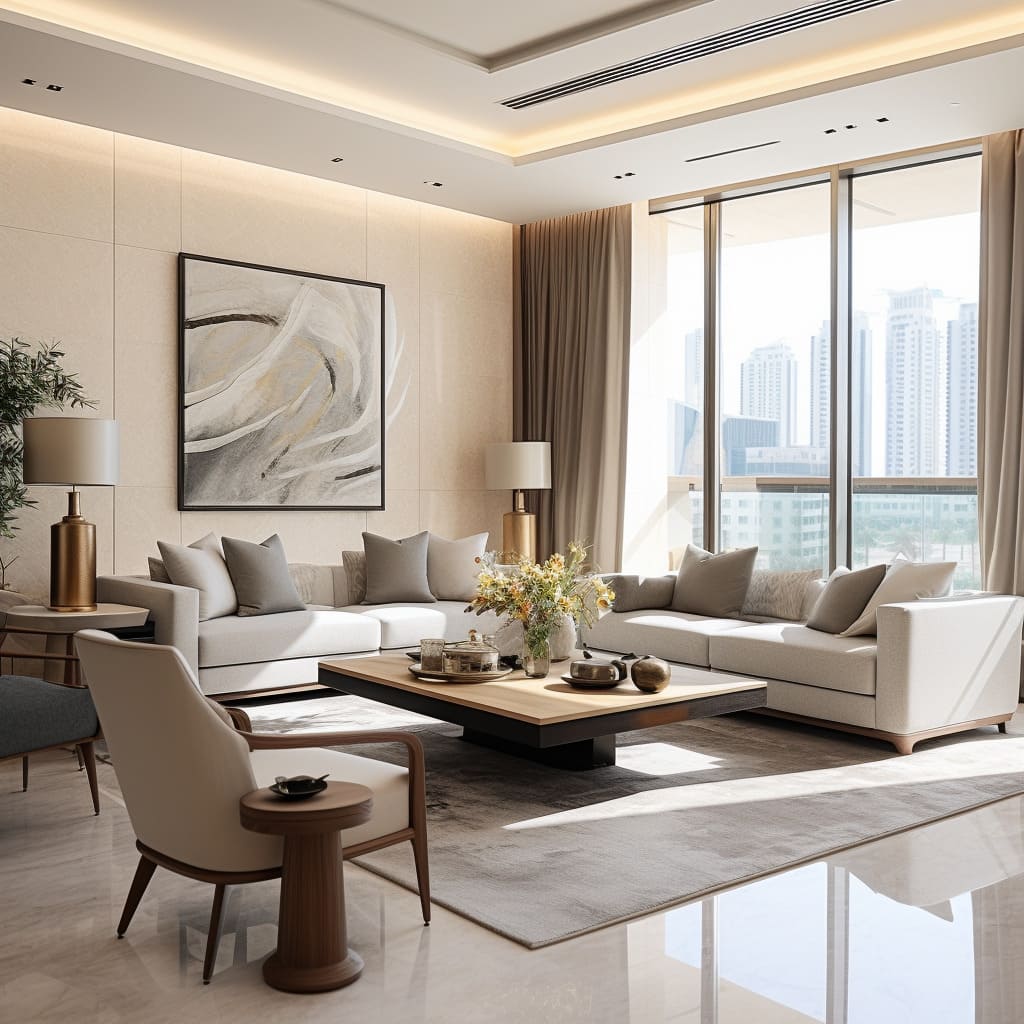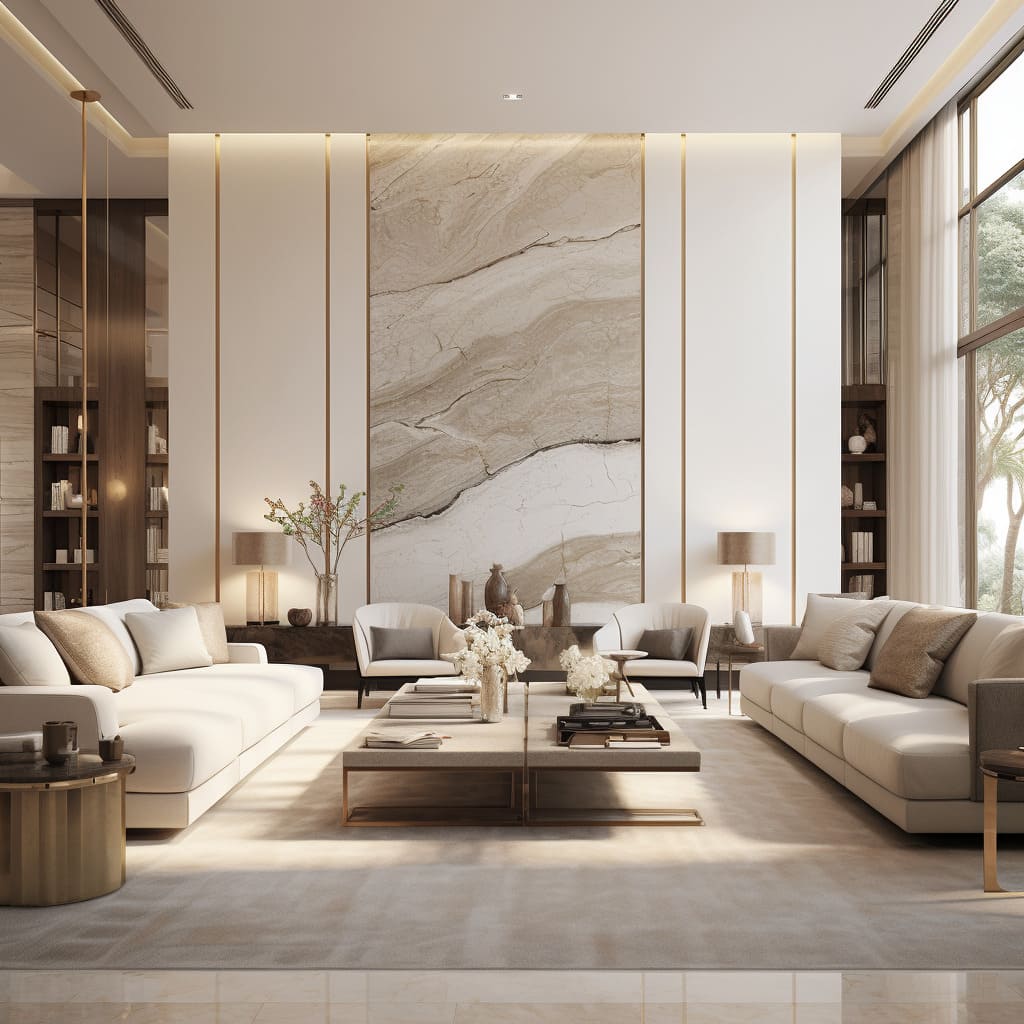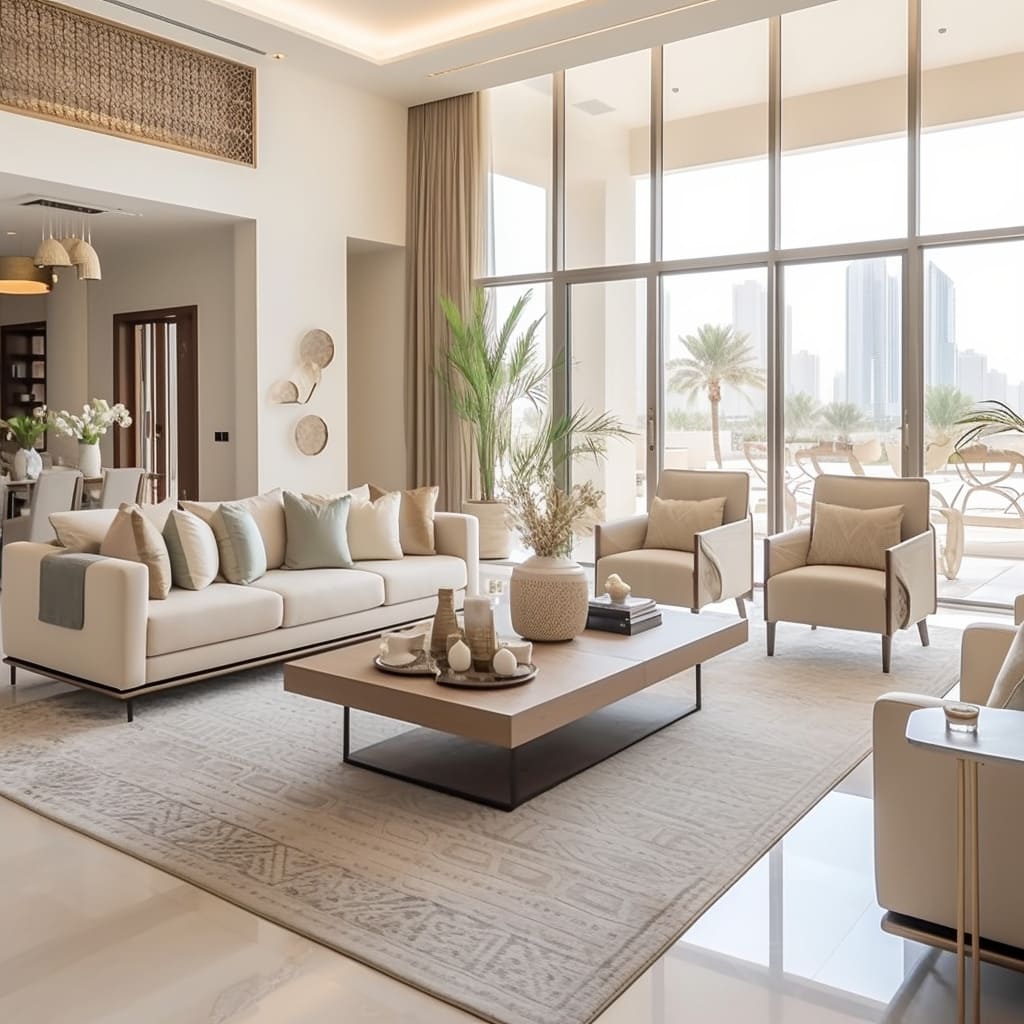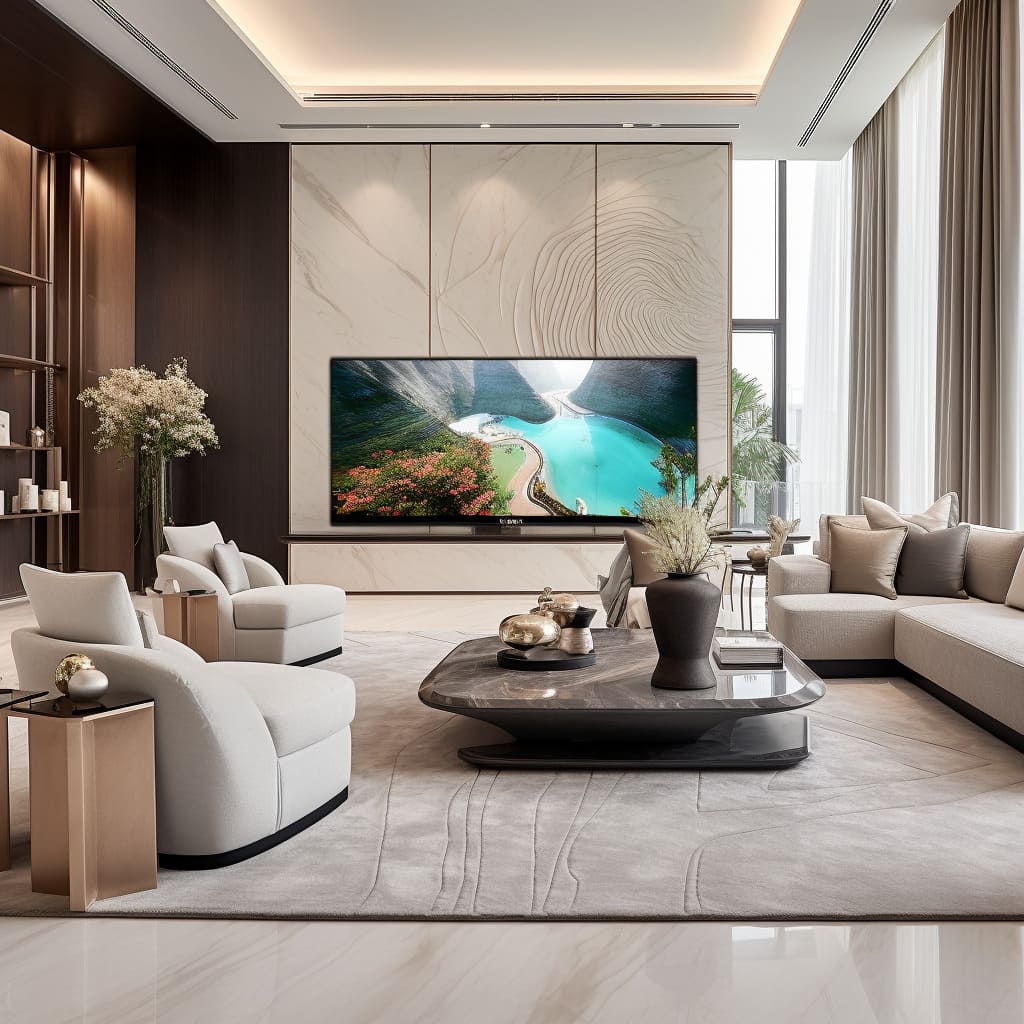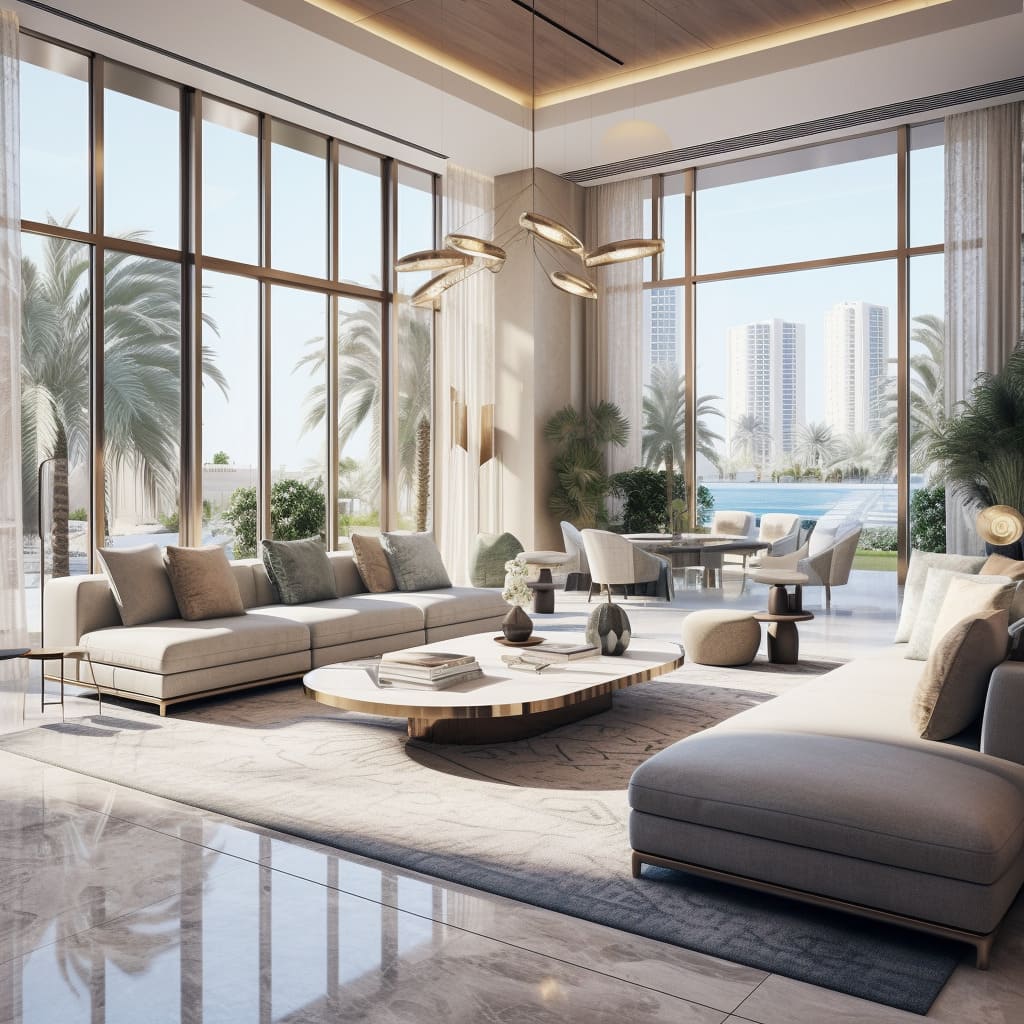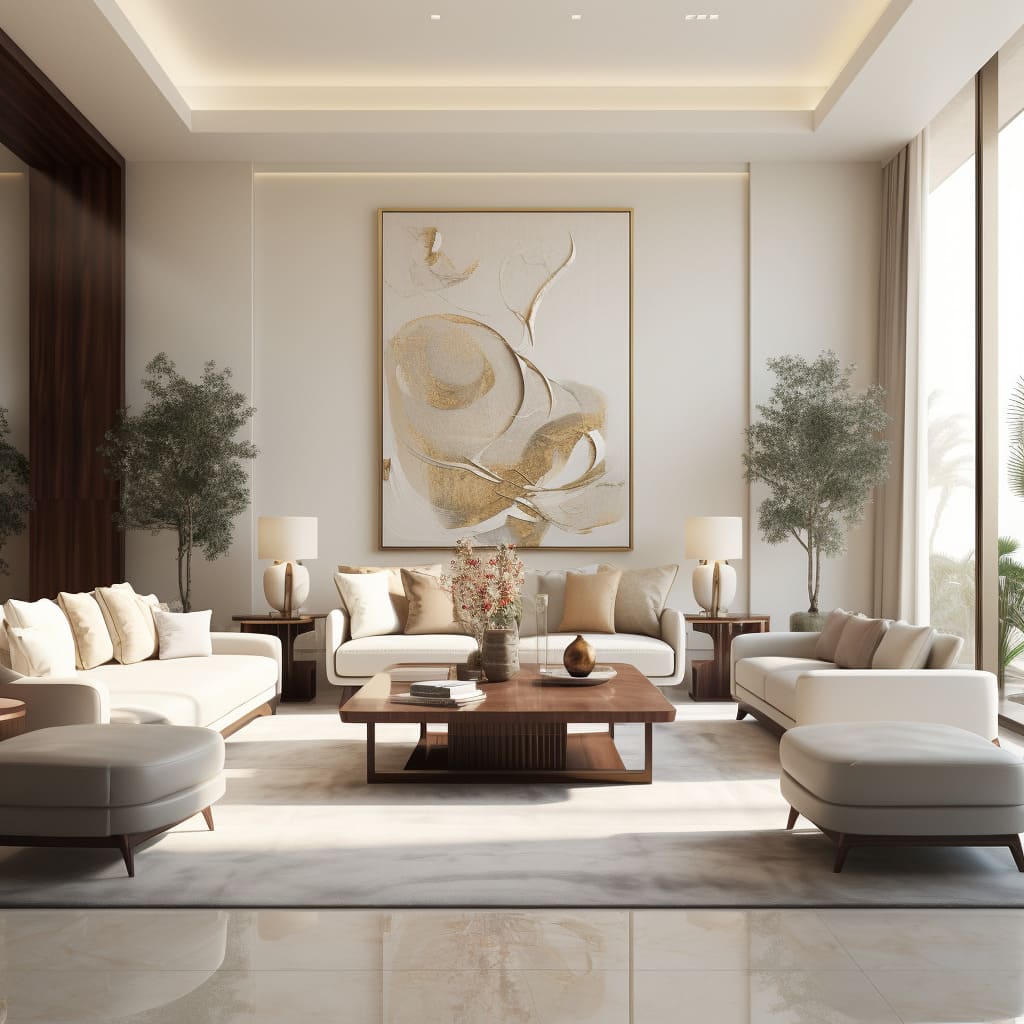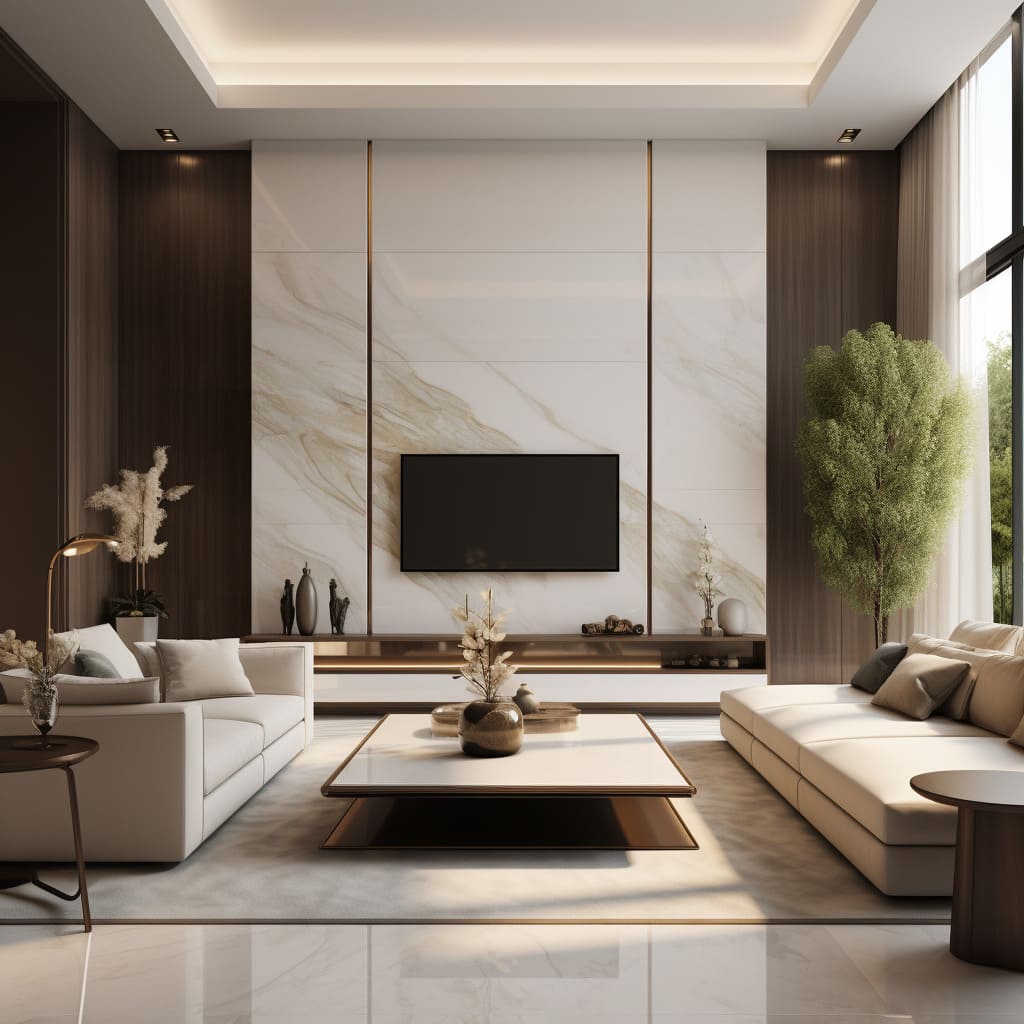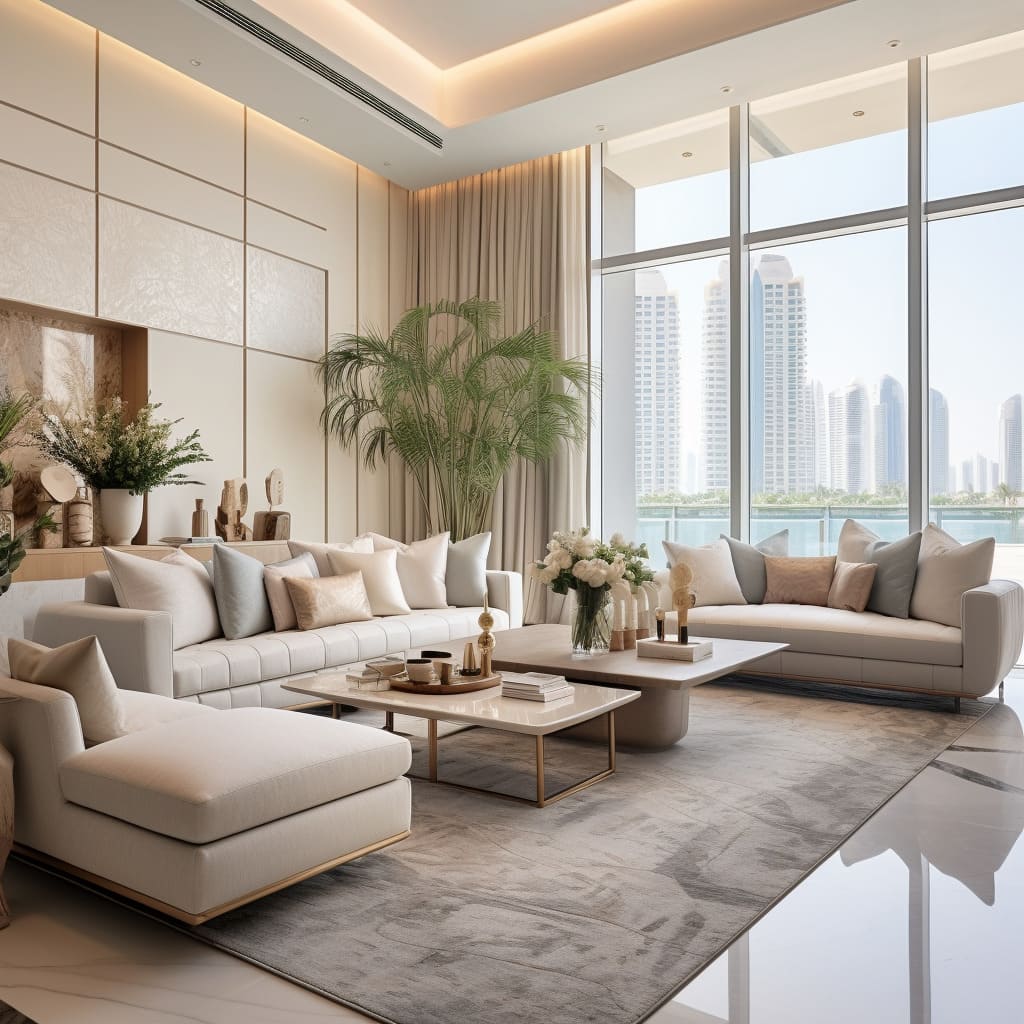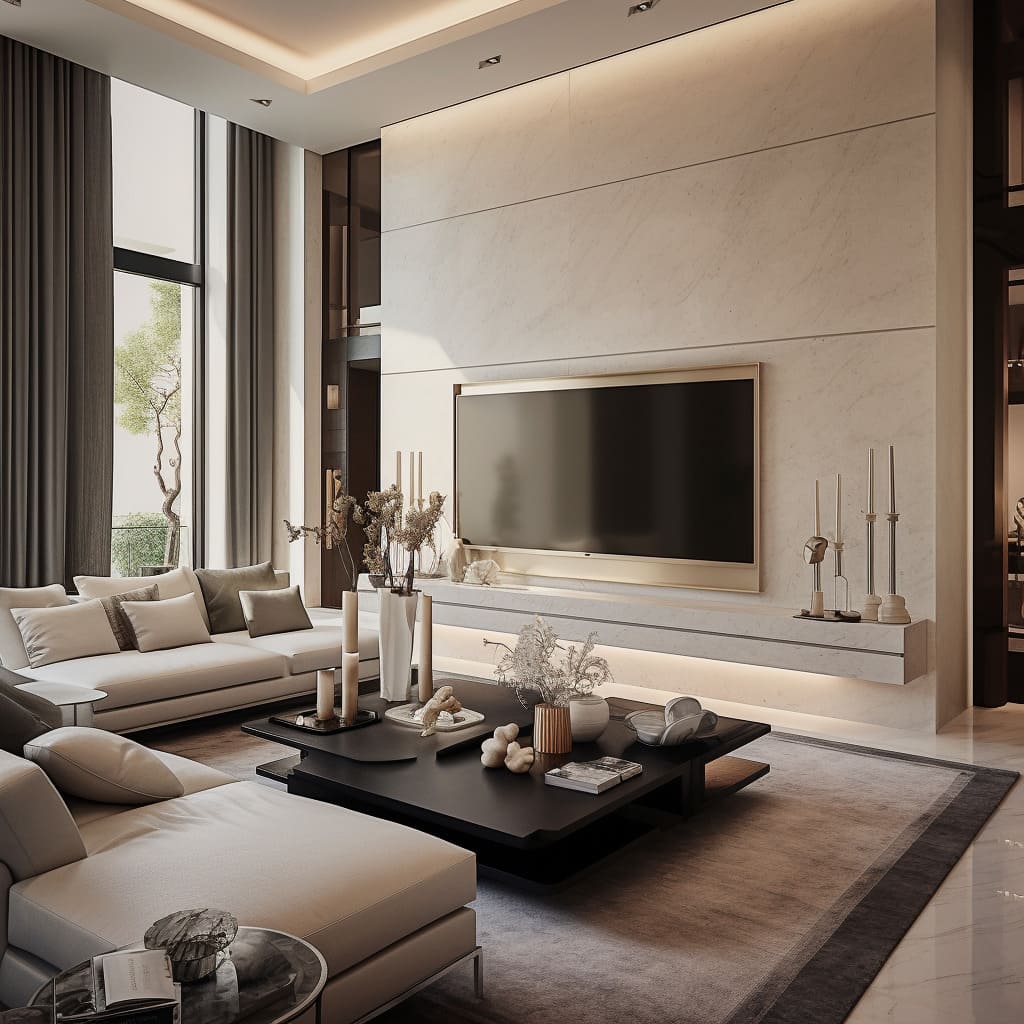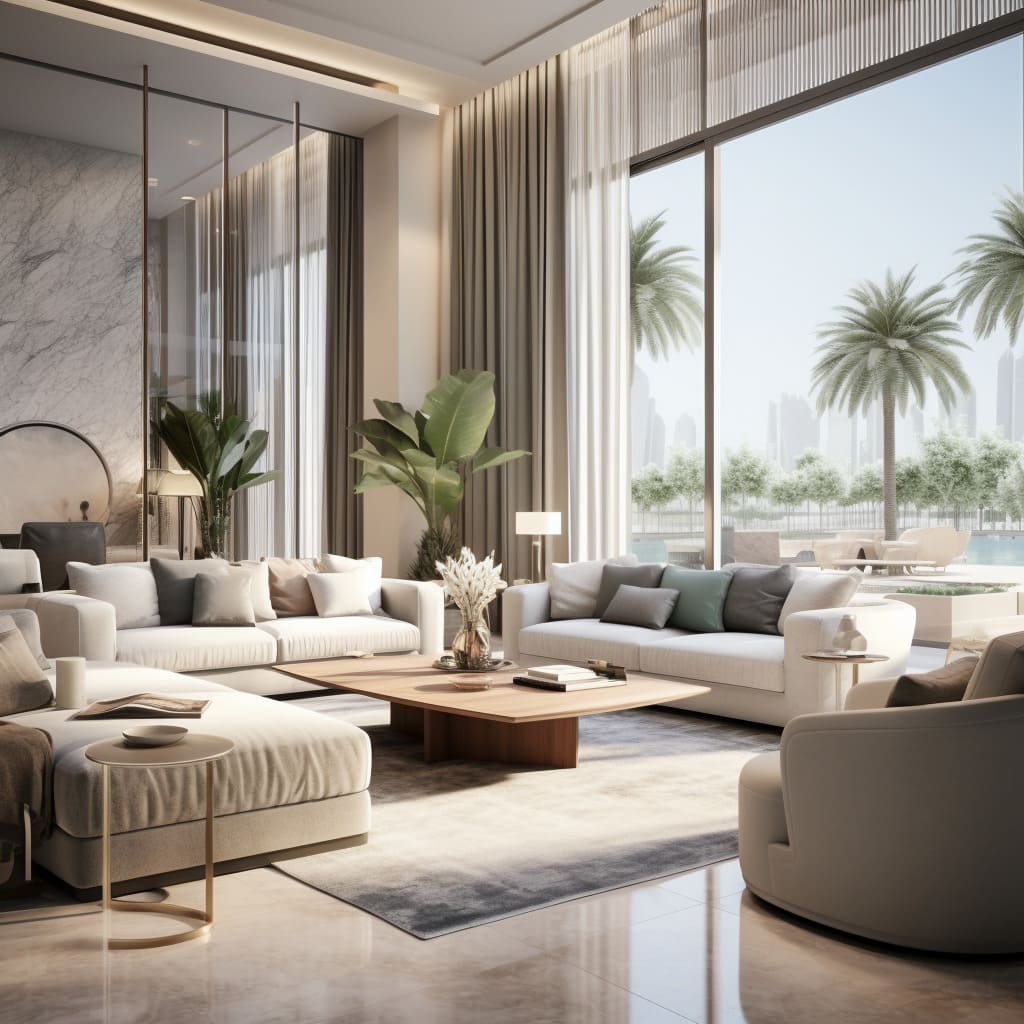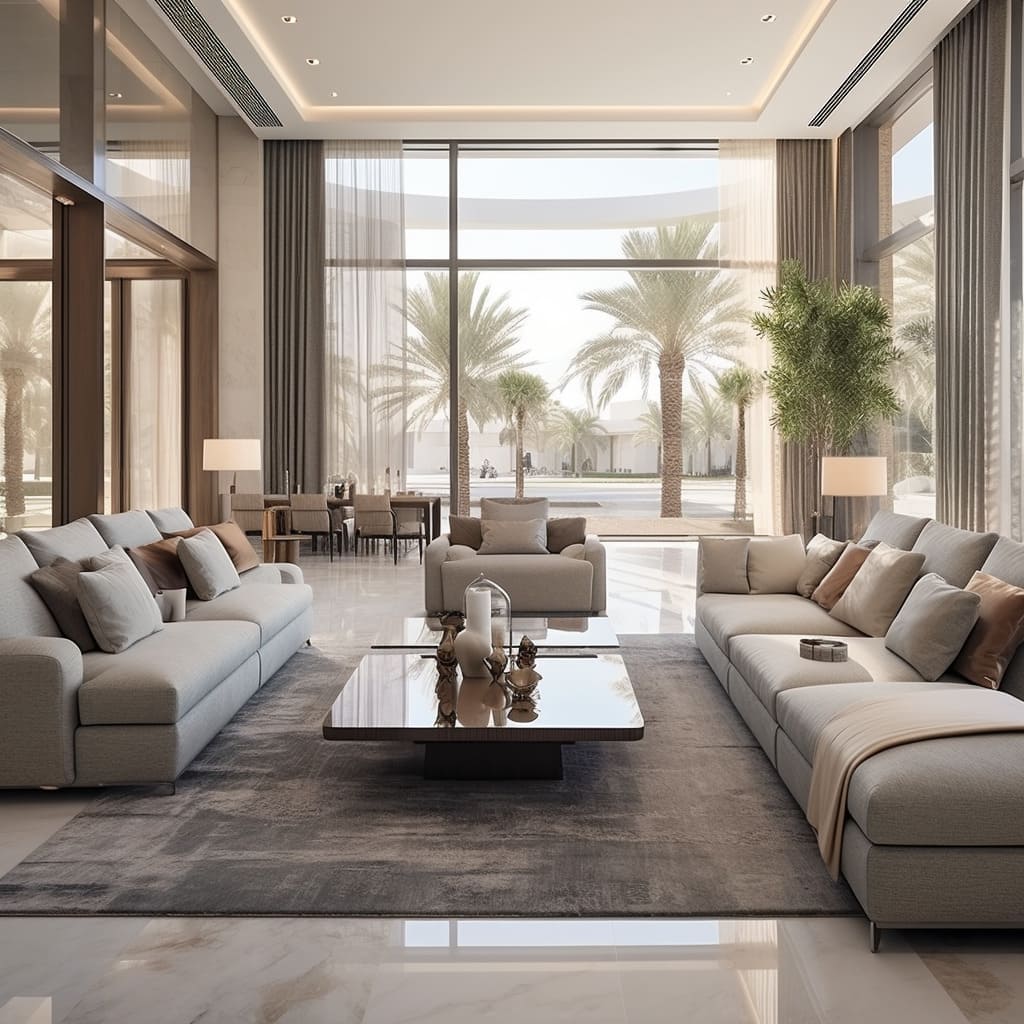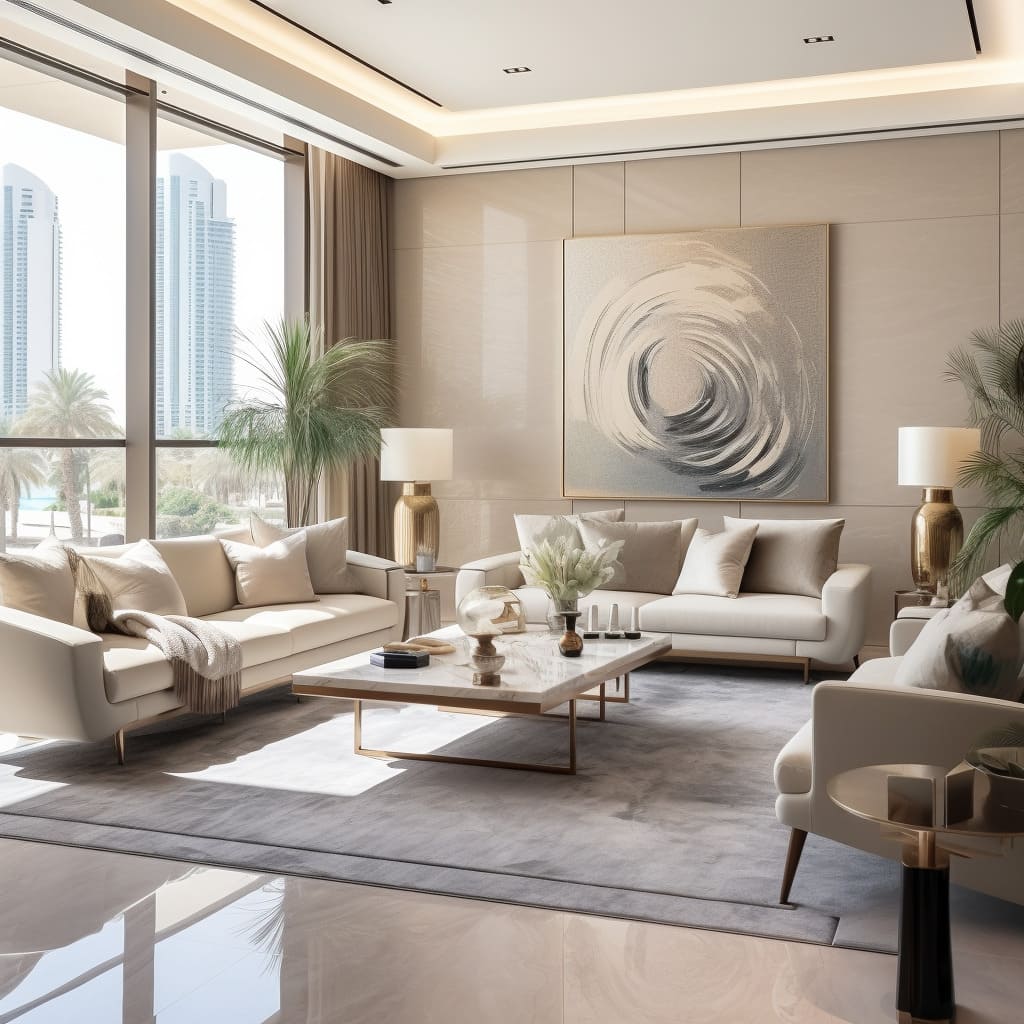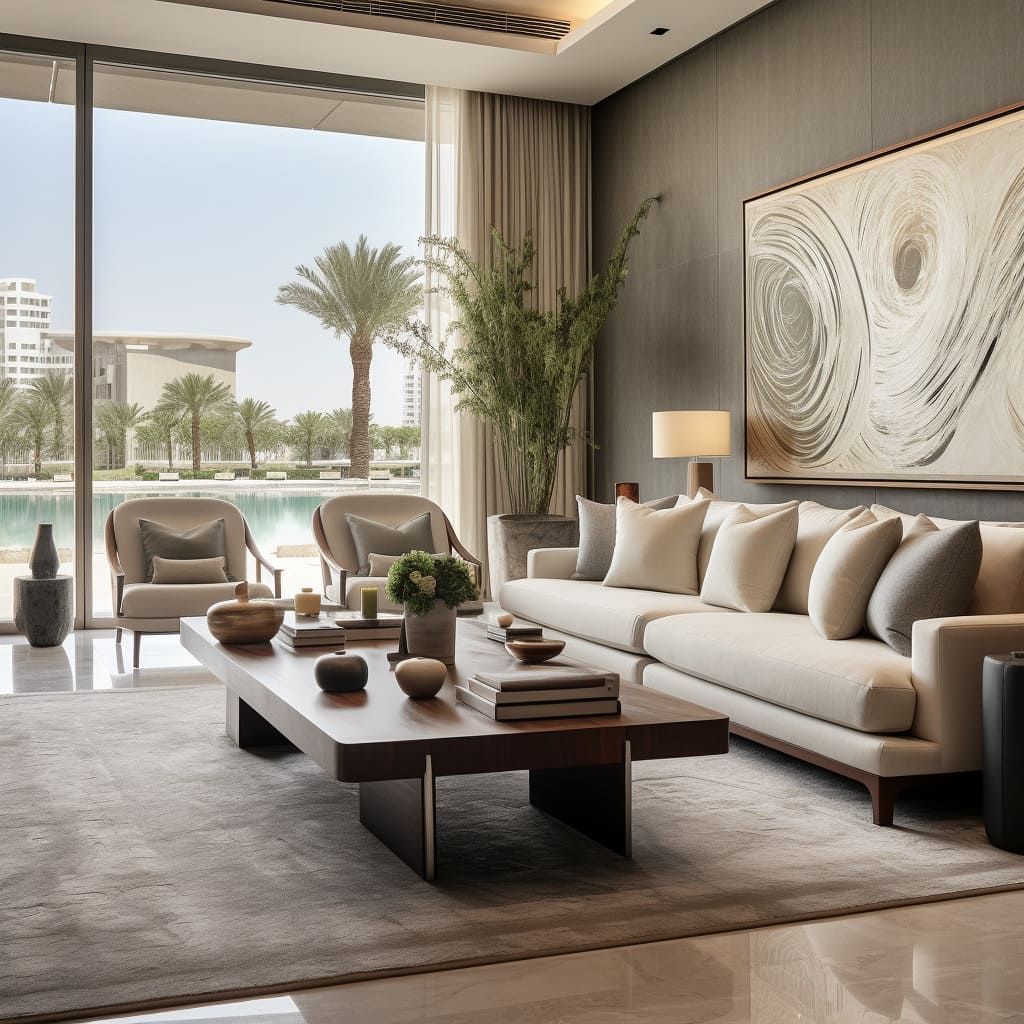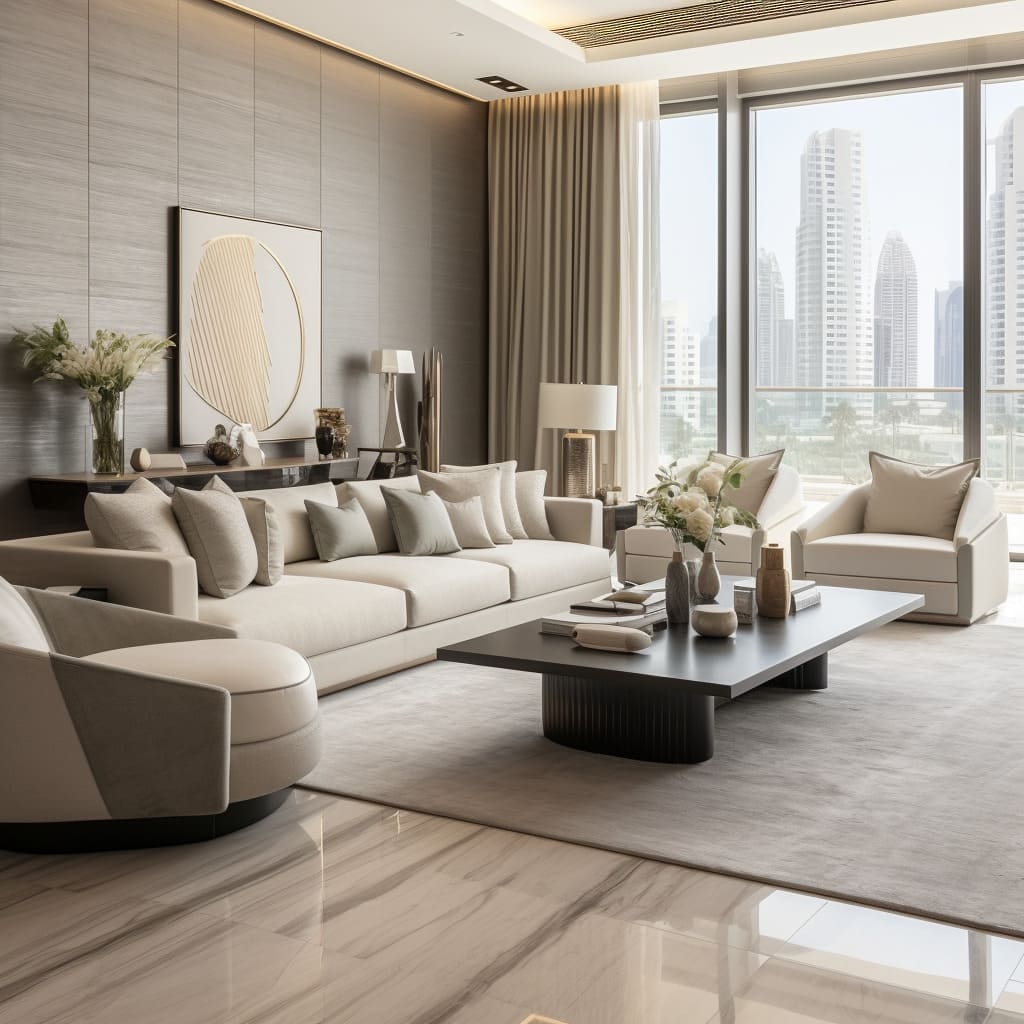The home is our haven, a place where we seek serenity and a break from the outside world. Modern minimalist interior design answers this call with its uncluttered, stylish aesthetic.
It’s a design philosophy that transcends the notion of mere simplicity; it’s an embrace of space, light, and tranquility.
Within the minimalist framework, every object, color, and texture serves a purpose, contributing to an atmosphere of harmony and understated elegance. This article delves deep into the nuances of modern minimalist interiors, highlighting how such spaces are not just visually appealing, but also emotionally comforting and functionally inviting.
The Heart of Minimalist Design
The foundation of minimalist design lies in its use of color—or the intentional lack thereof. Pale palettes of white, beige, and subtle wood tones do more than just define the space; they create an ambiance of warmth and openness.
In a minimalist setting, these soft hues become a living canvas, responding dynamically to the changing light. The inclusion of expansive windows not only architecturally opens up the space to panoramic urban vistas but also harnesses the full spectrum of natural light.
Comfort in Simplicity
Central to the minimalist ethos is the idea that less is truly more, particularly when it comes to furnishings. A plush, off-white sectional sofa becomes a sanctuary for relaxation, its large, cushioned expanse drawing you in.
The consistency in color between the sofa and the walls allows for a seamless visual flow, while the varied textures of throw pillows add a tactile depth to the monochrome scheme.
Complementary armchairs echo the sofa’s form, reinforcing the room’s cohesive design narrative. The coffee table, with its wooden build and sculptural base, stands as a testament to minimalist design — functional, yet artistically significant.
Adorned with carefully chosen decor such as tastefully arranged books and understated vases, the table serves as a focal point that is both practical and aesthetically pleasing.
Texture Talks
In a space where visual noise is kept at a minimum, texture speaks volumes. A large, light-colored area rug delineates the living area, its plush weave offering a contrast to the sleekness of the glossy floor.
The choice of textiles throughout the room is deliberate, with a preference for high-quality weaves that may include natural fibers for their durability and tactile appeal.
The textiles used on the furniture are not only pleasing to the eye but invite touch, further enhancing the sensory experience of the space. This careful curation of fabrics and textures introduces a layered complexity to the room, quietly breaking the monotony of the neutral color scheme without disturbing the minimalist balance.
Glow and Warmth
As daylight wanes, the room’s ambient lighting takes center stage. Recessed LED downlights twinkle from the ceiling like distant constellations, casting a warm, enveloping glow.
The subtlety of the lighting design ensures that the fixtures themselves are almost invisible, yet their effect is palpable, creating an atmosphere that’s equally welcoming in the evening as it is in the broad daylight. This thoughtful lighting strategy is essential in minimalist design, as it serves to both illuminate and enhance the space without becoming a distracting element.
Art: Simple Strokes of Personality
Art, when used in a minimalist context, is more than decoration; it’s a statement of identity. A single large abstract painting graces the wall, its muted tones and gentle strokes providing a visual break from the uniformity of the room.
The artwork’s presence is quiet but significant, lending a layer of sophistication and personal expression to the space. It serves as a focal point that draws the eye, offering a glimpse into the dwellers’ taste without overwhelming the senses.
Greenery: Life Among the Lines
Minimalism often runs the risk of feeling too sterile, but the introduction of plant life mitigates this by infusing organic shapes and textures into the room. Houseplants, whether standing tall in corners or arranged on surfaces, bring elements of the natural world indoors.
They contribute not only to the aesthetic but also to the air quality and the overall sense of well-being within the space. Plants in a minimalist home are chosen as much for their design appeal as for their ability to enhance the living environment, bringing a piece of the outdoors inside.
Arranged for Living: Furniture That Talks
The strategic placement of furniture in a minimalist space is more than just an aesthetic choice; it’s a deliberate design decision that impacts how people interact and experience the space. In minimalist interiors, every piece of furniture is carefully chosen and placed with a purpose, often focusing on functionality as much as form.
The arrangement is thoughtfully designed to facilitate interaction and comfort, creating an inviting and cohesive environment.
Couches and chairs, for instance, are not just randomly positioned but are carefully aligned to face each other. This setup is integral to creating a welcoming atmosphere that naturally encourages conversation and communal activities.
In a minimalist setting, where the decor is pared down, the focus shifts to the human element — the gatherings, discussions, and shared moments that occur within the space.
This intentional setup does more than just fill a room; it fosters a sense of togetherness and connection among those who inhabit it. By directing the seating towards a central point, be it a coffee table or a focal artwork, the design subtly encourages people to engage with each other, making the living space a hub for interaction and social bonding.
Moreover, in a minimalist design, the clear and uncluttered spaces around the furniture also play a critical role. They offer physical and visual breathing room, allowing for ease of movement and an unobstructed flow of energy.
This openness is essential in creating a relaxed environment, where one can unwind and feel at ease.
Open Space: Room to Breathe
One of the most distinctive and striking features of minimalist design is its emphasis on open, uncluttered spaces. This design philosophy eschews the typical accumulation of furniture and decor that characterizes many living spaces, instead opting for a more restrained approach.
In minimalist interiors, the room is thoughtfully laid out to maximize the sense of openness. This layout is carefully planned to allow for ample freedom of movement, creating an environment that feels both physically and visually spacious.
This abundance of open space in minimalist design is more than just an aesthetic choice; it’s a deliberate attempt to counter the often cramped and cluttered nature of urban living. In cities where space is a premium and homes can feel crowded, a minimalist approach offers a breath of fresh air.
By reducing the number of objects and furniture in a room, the space becomes less about the things in it and more about the space itself. This creates an environment that feels larger, airier, and more open than its actual physical dimensions might suggest.
Moreover, the sense of spaciousness in minimalist design also has a psychological component. In a world where our senses are constantly bombarded with stimuli, a minimalist space offers a sanctuary of simplicity.
The lack of clutter and excess in a minimalist room can have a calming effect, reducing stress and promoting a sense of peace and tranquility. The open spaces allow the mind to relax, free from the visual distractions and clutter that often lead to cognitive overload.
Furthermore, this open space is not just empty; it is charged with potential. In minimalist design, each piece of furniture and every design element is chosen for a reason.
The open space around these elements is just as important as the objects themselves, highlighting their form and function. This creates a balanced, harmonious environment where every item has its place, and there’s a place for every item.
Windows: Eyes to the World
The generous incorporation of large windows in minimalist design plays a critical and multifaceted role in shaping the character and ambiance of a space. These expansive windows do much more than simply serve as transparent barriers between the interior and the exterior; they act as dynamic visual gateways, offering a seamless connection to the outside world.
This architectural feature is pivotal in minimalist design, as it complements and enhances the interior’s understated elegance.
Firstly, the use of large windows introduces a wealth of natural light into the space, a key element in minimalist aesthetics. This influx of daylight not only brightens the room but also creates an interplay of light and shadow that adds depth and dimension to the simple decor.
The ever-changing quality of natural light throughout the day brings a dynamic and organic element to the space, ensuring that the room’s appearance evolves from dawn to dusk, continuously offering new perspectives and sensory experiences. These windows serve as a frame for the world beyond, transforming the view into a living, breathing artwork.
Whether overlooking a bustling cityscape, a serene landscape, or a vibrant street scene, the view becomes an integral part of the room’s design.
The urban environment, with its shifting colors, movements, and rhythms, provides a captivating and ever-changing backdrop that contrasts with the interior’s calm and ordered nature. This juxtaposition creates a unique spatial experience where the energy of the city is both visible and palpable, yet subtly distanced by the tranquility of the minimalist setting.
Additionally, the presence of large windows in a minimalist room blurs the boundaries between inside and outside. This creates a sense of expansiveness and openness, making the room feel larger and more connected to the environment.
The panoramic views afforded by these windows invite the outdoors in, allowing inhabitants to engage with the external world from the comfort of their minimalist haven. This connection to the external environment enriches the living experience, offering visual variety and a sense of being part of a larger, vibrant community.
Modern minimalist design transcends the realm of aesthetics to become a lifestyle choice. It’s a conscious decision to eschew excess in favor of essence, to find beauty in breadth, and to cultivate a home environment that’s as soothing to the soul as it is pleasing to the eye.
This design philosophy doesn’t just create spaces that look good; it shapes environments that feel good. It’s an approach to living that values quality over quantity, where every selection is intentional, and every detail has meaning.

